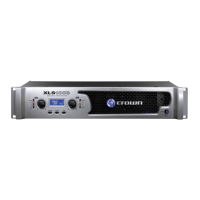MICROPROCESSOR CONTROL:
Boot & POST:
The microprocessor boots from its internal FLASH and does a variety of Power
On Self-Tests (POST). See the Error Codes section of the manual for a
description of all of the error codes and their meanings.
RUBY Interface:
Part of the processor’s POST involves interface with Ruby and ensuring that it is
up and working. The processor has two separate I2C interfaces: One for Ruby
(I2C1) and one for the TI DSP (I2C2).
DSP Interface:
As discussed previously, the processor boots the DSP via the dedicated I2C port.
Processor interfacing for various controls and monitoring is via this interface.
LCD Interface:
The LCD is purchased as a module and has an interface composed of an Enable,
Read/Write, Register Select, and Data Lines. The module works in nibble mode
where only Data Lines LCD_D[7:4] are used. The module has an internal
character register that generates the correct letter in the correct position based
upon the processor’s inputs. While the LCD module runs from +5V, the
processor utilizes +3.3V. The interface works due to the processor’s LCD’s I/O
lines using open drain outputs with +5V pullups.
Bias for the LCD’s contrast is provided via the processors PWM output that is
filtered by R725/C761. The module’s LED backlight is set by R730 from +5V.

